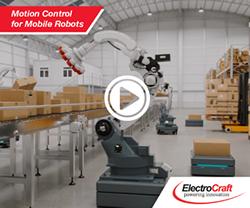Finding a way to more efficiently train our surgical teams and gain insight into their technical ability is paramount to optimizing patient safety and value.
 Training Surgeons to Use Robotic Systems
Training Surgeons to Use Robotic Systems

Justin Barad, MD | Osso VR
Please tell us a bit about Osso VR and your role in the robotics industry?
Technological innovation has brought with it a new challenge: Teaching clinicians how to use this new and often complex technology. Failing to do so can negate the potential benefits, ironically putting patients at risk of harm from the devices that were supposed to benefit them. Currently, there are critical issues in the way surgeons are trained, both in residency and beyond. Research shows that 30 percent of surgical graduates are unable to operate independently. Furthermore, surgeons out in practice have less time to perform the nearly 100 cases required to safely use each of today’s complex techniques and devices.
Osso VR uses virtual reality to provide the platform, content and tools to bridge the surgical training gap. Our mission is to improve patient outcomes, increase the adoption of higher-value medical technologies and democratize access to surgical education around the globe. We work with many of the world’s top orthopedic hospitals and device companies, including Smith & Nephew.
Surgical robots are an exciting technology, especially within the field of orthopaedics where they have the potential to provide repeatable and consistently high quality outcomes for all patients. These systems, however, often have a lengthy learning curve which can slow adoption and diminish the access patients have for this critical technology. Virtual reality helps accelerate the learning curve to alleviate the adoption bottleneck and optimize patient value.
What is the medical training gap? Why does it exist?
The training gap is simple math: there is too much to learn, and too little time to learn it all. The accelerating pace of advances in science and medicine over the last century is truly astonishing. New studies show that, by 2020, medical knowledge will double every 73 days compared to doubling every 50 years in the 1950s (Denson, 2011). While this has opened the door to new life-saving options, in general, new technologies are more complicated than simpler techniques from the past. The blistering speed of innovation and various other challenges are straining an aging century old surgical training framework, placing constraints on surgeons of all levels and the medical device companies that enable them. The end result is dangerous for patients, with a New England Journal of Medicine study showing that low-skilled surgeons can have mortality rates five times higher than their more skilled counterparts. Bad experience with new technologies, often related to insufficient training and assessment, can cause surgeons to cling to older, less effective alternatives, slowing adoption of these critical devices.
Finding a way to more efficiently train our surgical teams and gain insight into their technical ability is paramount to optimizing patient safety and value. Solving this challenge is also an important step to enable the continued innovation and safe adoption of new medical devices.
How is the advancement of robotics posing a particularly challenging training issue?
Surgical robotics holds great promise for a wide variety of procedures and conditions. This family of technologies has the potential to improve outcomes, reduce procedural variability, treat new conditions, scale up access to skilled surgical providers, promote minimally invasive options and much more.
 Unfortunately, robotics is not currently living up to various unique challenges the technology poses. Robotics, like most emerging technologies, can be quite complex, however the complexity is no longer a challenge for just the surgeon and isn’t just related to the actual surgery. Setting up, maintaining and troubleshooting the robots are serious procedure stopping bottlenecks that the surgical team needs to deal with frequently. In addition, these systems are primarily software driven requiring a different skill set than most surgical teams are typically equipped to handle. Like all software, robotics systems are periodically updated which can drastically change the way the surgery is done. This can be quite shocking for a surgical teams, with some providers reporting that they woke up one morning and had to call tech support in the middle of a surgery because they now had to do the surgery a completely different way and got stuck.
Unfortunately, robotics is not currently living up to various unique challenges the technology poses. Robotics, like most emerging technologies, can be quite complex, however the complexity is no longer a challenge for just the surgeon and isn’t just related to the actual surgery. Setting up, maintaining and troubleshooting the robots are serious procedure stopping bottlenecks that the surgical team needs to deal with frequently. In addition, these systems are primarily software driven requiring a different skill set than most surgical teams are typically equipped to handle. Like all software, robotics systems are periodically updated which can drastically change the way the surgery is done. This can be quite shocking for a surgical teams, with some providers reporting that they woke up one morning and had to call tech support in the middle of a surgery because they now had to do the surgery a completely different way and got stuck.
All of these issues limits the adoption and proper utilization of these impressive devices, preventing patients from accessing their full value.
What level of assessment is currently offered to surgeons using robotic devices? What does Osso VR offer that is unique in assessment?
Surgeons are rarely, and often never, objectively assessed for their technical skills. As an example, the only time I was ever assessed as a surgeon was when I was asked to play the board game Operation during a residency interview. This lack of assessment makes it difficult to create pathways for hospitals to adopt new technologies. Each hospital decides on its own what type of qualification is required for a given device, if any, leading to a patchwork of policies with no clear standard. This new generation of simulation technology allows us to clearly and objectively evaluate a surgical team’s technical and soft skills to ensure that they are proficient in using the device in a variety of scenarios in order to optimize outcomes. It provides a common ground for credentialing - which is in the interest of healthcare institutions, practitioners, industry and most importantly patients.
Assessing technical skills in VR has the potential to significantly improve patient outcomes by revealing targeted improvement areas for specific surgical skills and techniques. Our assessment component objectively measures the trainee’s knowledge of steps, accuracy, and procedural efficiency and then communicates that to the user in the form of actionable insights. We are even starting to analyze how a surgeon moves and using artificial intelligence to compare that motion with surgical experts. This helps surgeons understand their readiness to perform new or infrequently done procedures, while also providing a benchmark to compare against peers. The company utilizes a milestone assessment system that rewards progress without punishing early learners.
How do you envision VR technology changing the training paradigm? How will VR impact the adoption of robotic and robotic-assisted devices long-term?
Modern VR is already completely changing the way we think about technical training and assessment in healthcare. When discussing this issue with some of our advisors, they have suggested that 5 to10 percent of all healthcare spending is related to training and assessment in the US. If true, that would amount to about 30 billion dollars. Unfortunately, traditional technical training and assessment is expensive, inflexible and inaccessible.
But all of that has changed seemingly overnight. For $400 dollars, anyone in the world can now access the ability to train on any procedure, anywhere and anytime through a standalone headset that fits in a small messenger bag. Whether you are an experienced surgeon at the top tertiary care center in the world, or an aspiring provider in a low or middle income area, you are going to have the same access to high quality and effective training to bring the very best care to your patients.
When it comes to other medical technologies, VR is the catalyst that enables widespread education and adoption for these new treatment modalities.
Can you talk about some of the new technology/products that you are seeing enter the medical space now or in the near future?
I can certainly talk about it but I’m not sure there’s enough space in this article to fit it all! As mentioned, the accelerated pace of innovation within medical technology is absolutely mind-boggling. Artificial Intelligence, immersive technologies, and robotics are some of the main drivers of change we are seeing. Artificial intelligence is being used in a large number of healthcare applications, but some of the more prominent use cases is the ability to provide decision support for pathologists and radiologists to improve the efficiency and quality of their ability to “read” images and microscope slides. In some cases, AI is already performing better than their human counterparts, which has interesting implications for the future of some of these professions. Immersive technologies doesn’t just include simulation. VR is being leveraged for rehabilitation, psychiatric treatment, pain and distraction therapy, and even to correct certain vision disorders (which I find incredibly fascinating and impressive). In the operating room, augmented reality is helping coordinate through remote guidance and mentoring and also allowing surgeons to “see through” the patient to know exactly where they are going and what tissue is abnormal. While we have also discussed robotics at length, we are really only scratching the surface of the potential of this incredible suite of technology that can treat conditions we thought previously untreatable, and give quality surgical access to patients who may previously have had none at all.
It’s without a doubt an exciting time in healthcare and the ecosystem is ripe for change. The problems are large, the solutions are better than ever before, and there’s a developing comfort with technology that is leading to greater adoption of these solutions. As innovators it is up to us to safely disseminate and educate our patients and providers to optimize health around the globe.
The content & opinions in this article are the author’s and do not necessarily represent the views of RoboticsTomorrow
Comments (0)
This post does not have any comments. Be the first to leave a comment below.
Featured Product

